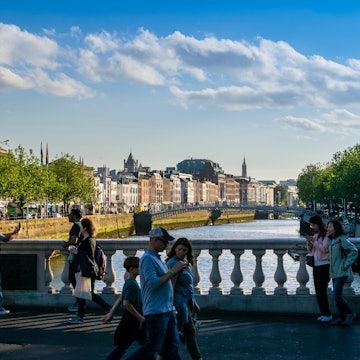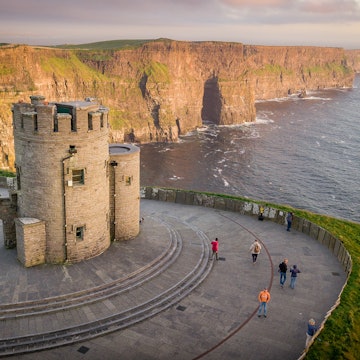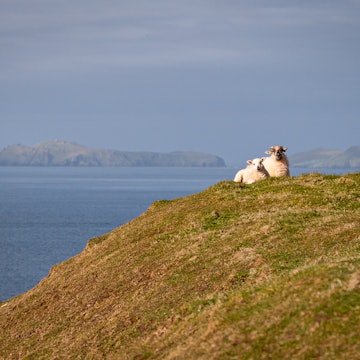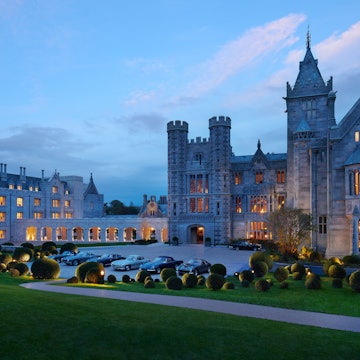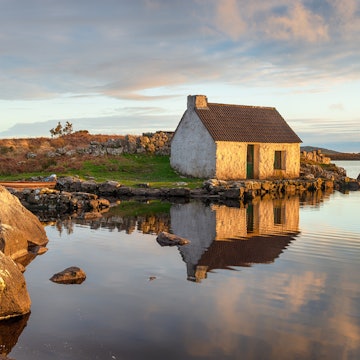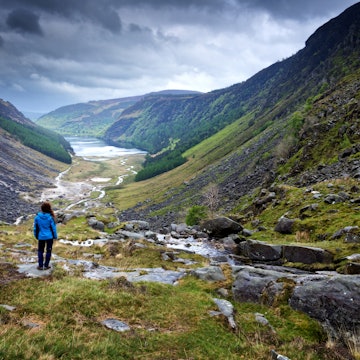

Ireland is a road-tripper's dream, with scenery and history in every direction. To turn your car into an instant time machine, all you have to do is hit the road and wind your way through middle Ireland’s collection of ancient tombs, Celtic sites and monastic cities, covering 3000 years in just four days.
An excerpt from Lonely Planet’s Ireland’s Best Trips, this trip transports you from the Neolithic era to the last days of the first millennium, via the best surviving sites from Ireland’s astonishing history: the prehistoric treasure trove of Cruachan Aí; the ancient passage graves of Newgrange and Loughcrew; the Celtic capital at Tara; and the rich monastic settlements of Clonmacnoise, Glendalough and Cashel.
String the 9 stops below together for the ultimate trip into Ireland’s history. See Ireland’s Best Trips for full route details, detours, and suggested accommodations and restaurants along the way.
1. Brú na Bóinne
A thousand years older than Stonehenge, the extensive Neolithic necropolis known as Brú na Boinne (the Boyne Palace) is simply breathtaking, even if at first glance it just looks like a handful of raised mounds in the fecund fields of County Meath.
The largest artificial structures in Ireland until the construction of the Anglo-Norman castles 4000 years later, the necropolis was built to house VIP corpses.
Only two of the passage graves are open to visitors (Newgrange and Knowth) and they can only be visited as part of a carefully controlled organised tour departing from the Brú na Bóinne Visitor Centre.

2. Slane
The fairly plain-looking Hill of Slane stands out only for its association with a thick slice of Celto-Christian mythology. According to legend, St Patrick lit a paschal (Easter) fire here in 433 to proclaim Christianity throughout the land.
It was also here that Patrick supposedly plucked a shamrock from the ground, using its three leaves to explain the paradox of the Holy Trinity – the union of the Father, the Son and the Holy Spirit in one.
3. Hill of Tara
The Hill of Tara (Teamhair) has occupied a special place in Irish legend and folklore for millennia, although it’s not known exactly when people first settled on this gently sloping hill with its commanding views over the plains of Meath.
Tara’s remains are not visually impressive. Only mounds and depressions in the grass mark where the Iron Age hill fort and surrounding ring forts once stood, but it remains an evocative, somewhat moving place, especially on a warm summer’s evening.

4. Loughcrew Cairns
There are 30-odd tombs here but they’re hard to reach and relatively few people ever bother, which means you can enjoy this moody and evocative place in peace.
Like Brú na Bóinne, the graves were all built around 3000 BC, but unlike their better-known and better-excavated peers, the Loughcrew tombs were used at least until 750 BC. As at Newgrange, larger stones in some of the graves are decorated with spiral patterns. Some of the graves look like large piles of stones, while others are less obvious, their cairn having been removed.
5. Tulsk
Anyone with an interest in Celtic mythology will be enthralled by the area around the village of Tulsk in County Roscommon, which contains 60 ancient national monuments including standing stones, barrows, cairns and fortresses, making it the most important Celtic royal site in Europe.
The Cruachan Aí Visitor Centre has audiovisual displays and informative panels and maps that explain the significance of the sites.
According to the legend of Táin Bó Cúailnge (Cattle Raid of Cooley), Queen Maeve (Medbh) had her palace at Cruachan. The Oweynagat Cave (Cave of the Cats), believed to be the entrance to the Celtic otherworld, is also nearby.
6. Clonmacnoise
Ancient Ireland is sometimes referred to as the ‘land of saints and scholars’, and one of the reasons why was the monastic city of Clonmacnoise, one of Europe’s most important centres of study between the 7th and 12th centuries. It was a top university before Oxford was a glint in the scholar’s eye.
Founded in 548 by St Ciarán, the monastery (whose name in Irish is Cluain Mhic Nóis, which means ‘Meadow of the Sons of Nós’) that became a bustling city is in remarkably good condition: enclosed within a walled field above a bend in the River Shannon are a superb collection of early churches, high crosses, round towers and graves, including those of the high kings of Ireland.

7. Cashel
Straddling a green hill above the town, the Rock of Cashel is one of Ireland’s most important archaeological sites and one of the most evocative of all ancient monuments. An important Celtic power base since the 4th century, most of what you see today dates from when it was gifted to the Church in 1101. Over the next 400 years, various bishops ordered the construction of the 13th-century cathedral, a wonderfully complete round tower, the finest Romanesque chapel in the country (1127) and the sturdy walls that surround it all. Although a collection of religious buildings, the rock was heavily fortified; the word ‘cashel’ is an Anglicisation of the Irish word caiseal, which means ‘fortress’.
Scattered throughout are monuments, panels from 16th-century altar tombs and coats of arms. If you have binoculars, look for the numerous stone heads on capitals and corbels high above the ground.
8. Jerpoint Abbey
One of Ireland’s finest Cistercian ruins, Jerpoint Abbey near Thomastown was established in the 12th century and has been partially restored. The tower and cloister are late 14th or early 15th century. The 45-minute tours are worth it, as the guides flesh out the abbey’s fascinating history.

9. Glendalough
Of all of Ireland’s monastic cities, none has the secluded beauty and isolated majesty of Glendalough, whose impressive ruins are more than rivalled by their setting: two dark glacial lakes at the foot of a forested valley that remain, despite the immense popularity of a visit, a profoundly peaceful and spiritual place.
In 498 the solitude-seeking St Kevin went to live in a Bronze Age tomb on the south side of the Upper Lake, but most of what you see dates from the 9th century onwards, when Kevin’s settlement rivalled Clonmacnoise as one of Ireland’s premier universities: huddled around the eastern end of the Lower Lake are Glendalough’s most fascinating buildings, including a roofless cathedral, a couple of churches, a gatehouse and a round tower.
Get full directions, maps and beautiful photos - plus dozens more trip itineraries - in Lonely Planet's Ireland's Best Trips










